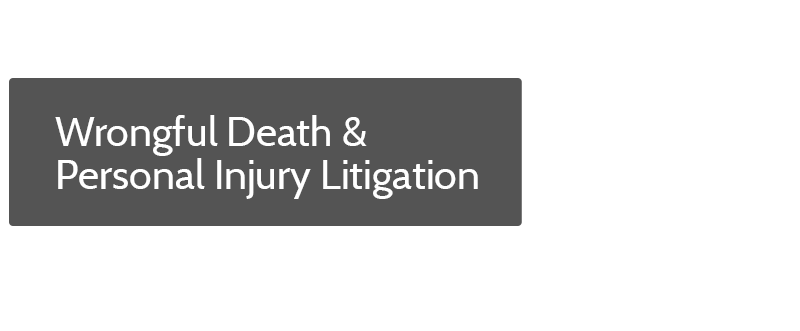Holes: More Than an Empty Threat
Renters, homeowners, and contractors dig holes on property for a variety of reasons. Fixing underground lines, installing swimming pools and other landscape features, and even children at play can result in holes. While some holes are filled immediately, others may remain open for days or even weeks.
Unfortunately, many holes are hidden by ground cover or hard to see from a distance, creating a hidden falling hazard.
The land around the edge of a hole may become soft or weakened by rain, sprinklers, or an unstable soil composition.
Hidden holes, and holes with softened edges, create a serious danger. Even a short fall, or twisting a foot or ankle in a hole, can cause ligament damage, muscle tears, and broken bones. The property owner or renter may be liable for all damages suffered, including medical bills, lost wages and pain and suffering, if the hole was improperly maintained, covered, or marked.
In the case of holes and open trenches, homeowner and occupant liability is based on the law of negligence. “Negligence” basically means a failure to act appropriately in response to a legal duty.
When a person has a duty to help prevent injuries, and fails to do so, that person may be held legally liable for all damages resulting from the dangerous condition or failure to act. With regard to holes and other property hazards, the homeowner’s duty to act usually falls into one of three categories:
1. The Duty to Warn.
Homeowners have a duty to post conspicuous signs warning of dangers on the property. This includes holes, whether or not the hole is easily visible to the naked eye. Don’t rely on someone seeing signs of construction and “knowing” to watch for a hole. Post clear signs at the property entrance and around holes and construction sites, warning of “Danger” and “Open Holes” or other dangers.
2. The Duty to Cover and Fence.
Homeowners have a duty to cover holes and to put up fences around holes and open trenches, to prevent accidental falls and other injuries. Many municipalities have laws regulating fencing and coverings for holes, both during construction and for holes of a permanent or semi-permanent nature. Check with your local building and safety department to ensure your covers and fencing comply with applicable laws and regulations.
Coverings should extend a safe distance past the edge of the hole, to ensure that softened soil around the edge of the hole doesn’t cause the cover to slip down into the hole. Improper coverings can be as dangerous, if not more dangerous, than an open, unprotected hole. If the covering will not hold the weight of two adults, the hole should be fenced as well as covered.
Fencing should be at least as high as laws in your city or municipality mandate for safety around holes and trenches. Check with your local building department for height and construction requirements. Make sure all fences are located far enough from the hole to avoid unstable soil around the edges. Fences should also be strong and stable enough to prevent a child or a pet from accidentally dismantling or running through the fencing.
3. The Duty to Fill Promptly.
Holes should be filled, and the ground leveled, as soon as possible. Open holes represent an ongoing hazard. While it isn’t practical to fill and level all holes at the end of every working day, homeowners and renters should finish work promptly (or ensure that contractors do so) and make sure that completion includes proper filling and grading of all holes and trenches.
The Homeowner’s Liability Extends to Guests and Trespassers Alike
Most homeowners understand that they can be held responsible for injuries to their guests. However, liability can also extend to people who enter the property without the occupants’ permission. Courts in Los Angeles County and elsewhere have held property owners and tenants liable for injuries to trespassers too.
Take Responsibility For Avoiding Liability
If you have holes on your property, post proper warnings. Cover and/or fence all holes, and fill them promptly and evenly as soon as reasonably possible.
If you let your children dig in the yard, teach them to fill and level all holes immediately–and supervise the process. Parents are liable for their children’s acts, and for injuries caused by or resulting from the activities of children.
Finally, remember that liability extends to naturally-occurring holes, like rabbit holes and rat holes, as well as to holes created by humans. Homeowners need to inspect property regularly and take proper action to mark or eliminate hazards.
Pay attention to those holes, and fill them quickly, before someone else fills them with liability instead.
If you have questions about this or other homeowners’ liability issues, please contact our office.
















